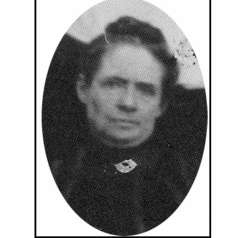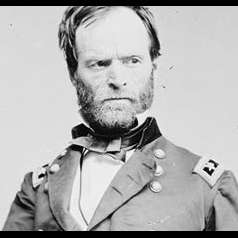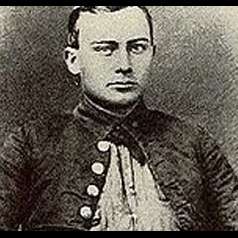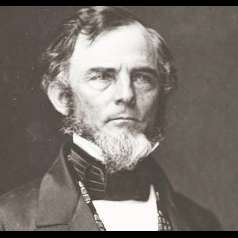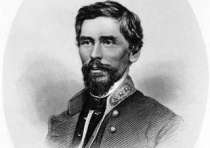
Major general in the Army of Tennessee, Patrick R. Cleburne was born on St. Patrick's Day in County Cork, Ireland, and immigrated to the United States in 1849. Cleburne settled in Helena, Arkansas, where he rose in social position and community esteem.
In the spring of 1861 Cleburne cast his lot with the Confederacy. The citizens of Helena elected Cleburne captain of the local militia. Drawing upon his three years of experience in the British army, Cleburne quickly advanced to the rank of colonel in the Fifteenth Arkansas Infantry Regiment. Within a year, he was a brigadier general in General Albert S. Johnston's Army of Mississippi.
On April 6, 1862, Cleburne and his brigade spearheaded the attack against the Union army around Pittsburg Landing, where he faced the troops of General William T. Sherman. After heavy resistance, Cleburne's untested brigade forced the Union troops into retreat past Shiloh Church to within 400 yards of the Tennessee River.
After the Army of Tennessee's ill-fated Kentucky campaign in the autumn of 1862, Cleburne's troops retreated to Middle Tennessee. While visiting the Confederate camp at College Grove in December 1862, President Jefferson Davis personally commissioned Cleburne major general.
During the battle of Stones River less than three weeks later, Cleburne's men spearheaded the attack on the Union right, driving the Federal line back three miles. When Confederate commander Braxton Bragg failed to capitalize on this advantage, Cleburne's division acted as the rear guard for the Southern retreat to Chattanooga.
During the battle of Chattanooga Cleburne's division anchored the Confederate line on Missionary Ridge around Tunnel Hill. When the center of the Confederate line collapsed, Cleburne's troops again acted as the rear guard for the Southern retreat.
The final chapter of Cleburne’s life was written at the battle of Franklin. As Cleburne's troops made their assault up the Columbia Pike, the general had two horses shot from under him. Finally, as he advanced on foot to within 50 yards of the Union works, a single minie ball pierced his chest. He is buried in Helena, Arkansas.
Tools
Key Facts
- Forced troops of Gen. William T. Sherman into retreat past Shiloh Church around Pittsburg Landing.
- Spearheaded the attack on the Union right at Stones River, driving the Federal line back three miles.




